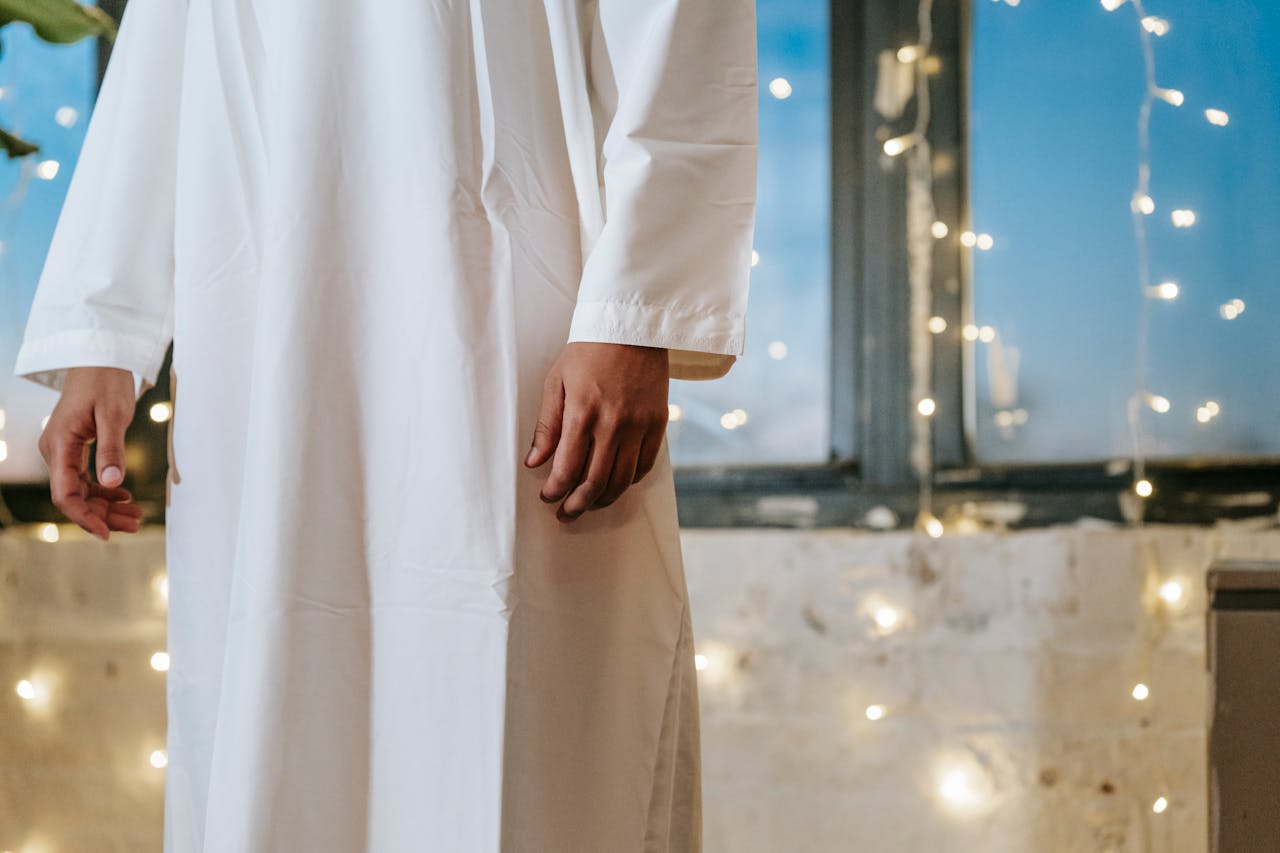Salah: The Heart of Islam
Salah, the Arabic word for Prayer, it is the heart of Islamic worship.
Allah Almighty says in the Quran,
“Establish prayer, indeed, prayer prohibits immorality and wrongdoing, and the remembrance of Allah is greater indeed. And Allah knows what you do.” (Quran 29:45).
Derived from the root word “salata,” signifying to pray, connect, or worship, Salah is a direct connection with Allah, the Almighty.
It was prescribed during the night of the Isra and Mi’raj, the miraculous night journey of the Prophet Muhammad (PBUH).
What is Salah and Why Do Muslims Pray?
Salah is the second pillar of Islam and is an obligation for every Muslim, that goes beyond gender, age, and geographical boundaries. Muslims perform five daily prayers, or Salah, as a form of submission and remembrance of Allah (SWT), as emphasized in the Quran:
“And establish prayer for My remembrance.” (Quran 20:14)
The primary purpose of Salah is to foster a direct and personal relationship with Allah (SWT), seeking His guidance, mercy, and forgiveness. It is a means to purify the soul, maintain discipline, and stay mindful of our Creator.
Checklist for Getting Ready to Pray Salah
Before starting on the beautiful journey of Salah, ensure you have fulfilled the requirements:
- Wudu (Ablution): Before performing Salah, a state of physical purity must be attained through Wudu (ablution). For a detailed guide on performing Wudu, please refer to our comprehensive blog on How to Perform Wudu.
- Time of Salah: know the correct prayer time based on your location. Use reliable prayer time apps or websites to ensure accuracy.
- Dress: Wear clean, modest clothing. For men, covering from the navel to the knees is essential, and for women, covering the entire body except the face and hands is required.
- Clean Place Perform Salah in a clean area, free from impurities. Ideally, choose a place free from distractions.
- Facing the Qibla: Face the direction of the Kaaba in Mecca. Use a Qibla compass or app to determine the correct direction.
How to Perform Salah, Step by Step
Learning to pray Salah is a rewarding experience. Let’s learn the steps of Salah:
Step 1: Intention (Niyyah)
Begin with the intention in your heart to pray a specific Salah for Allah (SWT). Hadith 33, 40 Hadith
Step 2: Standing (Qiyam):
Begin by standing upright, facing the Qibla.
Raise your hands to your ears and say Takbiratul Ihram “Allahu Akbar” (Allah is Greater).
Place your right hand over your left hand on your chest.
Recite Dua Al Istiftah
Dua Al Istiftah (opening dua)
سُبْحَانَكَ اللَّهُمَّ وَبِحَمْدِكَ وَتَبَارَكَ اسْمُكَ وَتَعَالَى جَدُّكَ وَلاَ إِلَهَ غَيْرُكَ
Glorious You are O Allah, and with Your praise, and blessed is Your Name, and exalted is Your majesty, and none has the right to be worshipped but You.
After reciting Dua al Istiftah, recite Surah Fatiha and any other Surah from the Quran.
Step 3: Bowing (Ruku):
As you are bowing down say “Allahu Akbar” and bend your body at the waist, placing your hands on your knees.
then recite “Subhana Rabbial ‘Azeem” (Glory be to my Lord, the Magnificent) three times or more.
Ensure your back is straight and your head is in line with your spine.
Step 4: Standing Up
Rise from the bowing position and say “Sami’ Allahu liman hamidah” (Allah hears those who praise Him), followed by “Rabbana wa lakal hamd” (Our Lord, to You is due all praise).
Step 5: Prostration (Sujud):
Say “Allahu Akbar” and Lower yourself to the ground, touching your forehead, nose, palms, knees, and toes to the ground. Sahih al-Bukhari 812
then recite “Subhana Rabbiyal A’la” (Glory be to my Lord, the Most High) three times or more.
Maintain a calm and focused state of mind.
Step 6: Sitting (Jalsa):
Sit upright between two prostrations, resting on your left foot with your right foot upright.
Recite “Rabbighfir li” (My Lord, forgive me).
Step 7: Second Prostration (Sujud):
Say “Allahu Akbar” and Perform the second prostration as described above. (Step 5)
Step 8: Standing:
Rise from the sujud back to the standing position while saying “Allahu Akbar” for the second unit of prayer (Rak’ah)
Repeat the above steps (from Reciting Surah Fatihah till Second Prostration) for the second rak’ah.
Step 9: Sitting for Testimony (Tashahhud)
After completing every 2 rak’ahs, sit and recite the Tashahhud:
التَّحِيَّاتُ لِلَّهِ وَالصَّلَوَاتُ وَالطَّيِّبَاتُ، السَّلاَمُ عَلَيْكَ أَيُّهَا النَّبِيُّ وَرَحْمَةُ اللَّهِ وَبَرَكَاتُهُ، السَّلاَمُ عَلَيْنَا وَعَلَى عِبَادِ اللَّهِ الصَّالِحِينَ، أَشْهَدُ أَنْ لاَ إِلَهَ إِلاَّ اللَّهُ وَأَشْهَدُ أَنَّ مُحَمَّدًا عَبْدُهُ وَرَسُولُهُ
At-tahiyyatu lillahi wa-ssalawatu wa-t-tayibatu. As-salamu ‘alayka ayyuha an-nabiyyu wa rahmatullahi wa barakatuh. As-salamu ‘alayna wa ‘ala ‘ibadillah-is-salihin.
All compliments, prayers, and pure words belong to Allah. Peace be upon you, O Prophet, and the mercy of Allah and His blessings. Peace be upon us and upon the righteous servants of Allah.
If this is the final rak’ah (unit of prayer), include the following addition (Durood e Ibrahimi) to the Tashahhud.
اللَّهُمَّ صَلِّ عَلَىٰ مُحَمَّدٍ وَعَلَىٰ آلِ مُحَمَّدٍ كَمَا صَلَّيْتَ عَلَىٰ إِبْرَاهِيمَ وَعَلَىٰ آلِ إِبْرَاهِيمَ إِنَّكَ حَمِيدٌ مَجِيد
اللَّهُمَّ بَارِكْ عَلَىٰ مُحَمَّدٍ وَعَلَىٰ آلِ مُحَمَّدٍ كَمَا بَارَكْتَ عَلَىٰ إِبْرَاهِيمَ وَعَلَىٰ آلِ إِبْرَاهِيمَ إِنَّكَ حَمِيدٌ مَجِيدٌ
English Translation:
O Allah, send Your blessings upon Muhammad and the family of Muhammad, as You sent Your blessings upon Ibrahim and the family of Ibrahim. Indeed, You are Praiseworthy and Glorious. O Allah, bestow Your grace upon Muhammad and the family of Muhammad, as You bestowed Your grace upon Ibrahim and the family of Ibrahim. Indeed, You are Praiseworthy and Glorious.
Step 10: Concluding Salah (Tasleem): After reciting the Durood Ibrahim in the Tashahhud, you may make any supplications (dua).
To conclude the prayer, turn your head to the right and say “Assalamu Alaikum wa Rahmatullah” (Peace and mercy of Allah be upon you), then turn your head to the left and repeat the same “Assalamu Alaikum wa Rahmatullah” (Peace and mercy of Allah be upon you).
Saying the Tasleem (saying Asslam u Alykum Wa Rahmatullah Wa Barakatuhu) marks the end of the prayer.
How to Pray the 5 Daily Salah
The following are the obligatory Fard rak’ahs for each Salah, which must be performed by every Muslim. To increase your reward, consider adding the optional Sunnah rak’ahs (12 in total) as well.
- Fajr: 2 rak’ahs (units) – performed silently.
- Dhuhr: 4 rak’ahs – performed silently.
- Asr: 4 rak’ahs – performed silently.
- Maghrib: 3 rak’ahs – The first two rak’ahs are loud, and the third is silent.
- Isha: 4 rak’ahs – the first two rak’ahs are loud, and the last two are silent.
Conditions and Pillars of Salah
For Salah to be valid, certain conditions must be met, and specific pillars must be fulfilled:
Conditions of Salah:
- Purity: Physical purity through Wudu or Ghusl. (Sahih Muslim 224a)
- Time: Praying within the specified times. (Quran4:103)
- Facing Qiblah: Facing the direction of the Kaaba. (Quran 2:150)
- Covering the body: Modest and clean attire.
Pillars of Salah:
- Takbir al-Ihram: Saying The opening Takbir (Allah u Akbar).
- Qiyam: Standing during the prayer.
- Reciting Surah Fatihah: in every rak’ah
- Ruku: Bowing.
- Rising from Ruku (Bowinng)
- Standing up straight: after rising from the ruku
- Sujud: Prostrating on the seven bones; forehead, nose, palms, knees, and toes touching the ground. Sahih al-Bukhari 812
- Rising from the Sujud
- Sitting: after rising from the sujud sitting between the two Sujud (prostrations)
- Performing the pillar of salah (prayer) with ease and comfort.
- Final Tashahhud:
- Sitting in Tashahhud: Sitting for the last tashahud
- Tasleem: Concluding the prayer with the 2 salams, saying “Asslam u Alaykum wa Rahmatullah” to the right and saying “Asslam u alykum wa Rahmatullah” to the left
- Correct Order: Performing the pillars in the correct order.
Additional Tips and Guidance
- Common Mistakes and How to Avoid Them:
- Rushing through Salah: Take your time to ensure each posture and recitation is performed correctly.
- Lack of concentration: Focus on the meanings of the words being recited.
- Benefits of Performing Salah Regularly:
- Spiritual purification.
- Discipline and time management.
- Physical exercise and health benefits.
- Strengthened connection with Allah (SWT).
- Creating a Conducive Prayer Environment:
- Choose a quiet and clean place.
- Eliminate distractions.
- Use a prayer mat.
- Importance of Concentration and Mindfulness During Salah:
- Salah should be performed with full concentration and humility.
- Reflect on the meanings of the recitations.
Salah for Women
Women pray Salah in the same manner as men, observing the same postures, recitations, and prostrations. However, there are specific considerations related to women’s physiology.
- Menstrual cycle: Women are exempted from Salah during their menstrual period and postpartum bleeding.
- Purification: Perform ghusl after the end of the menstrual cycle or postpartum bleeding.
Salah for Children
- Introduce Salah early: Teach children about Salah in a fun and engaging way.
- Keep it simple: Start with basic concepts and gradually increase their understanding.
- Lead by example: Children learn by observing their parents’ devotion to Salah.
Conclusion
Understanding how to perform Salah is fundamental for every Muslim. By following this guide on how to perform Salah, you can ensure that your prayers are performed correctly and with sincerity, as taught by the Prophet Muhammad (PBUH). Regular and mindful Salah not only fulfills a religious obligation but also brings immense spiritual and worldly benefits.
May Allah (SWT) accept our prayers and guide us on the path of righteousness. Ameen.
For further details and a step-by-step guide on performing Wudu, visit our blog on How to Perform Wudu.










Its informational
I liked it a lot I learned about the important parts of Salah and meanings.
good and important information
this is very informational and I understood well thank you. very detailed steps.
Assalam O Alaikum,
I thank my teacher for sharing this with me. I also thank everyone else for creating such an informative and detailed blog for me to understand and learn.
i love to learn about it
and it is intresting and it is fasinating
I learnt a lot of facts out Salah, and what I should do and what I shouldn’t.
I thought it was very informative and interesting. :]]]
I thought it was very informative and interesting! ;]]]